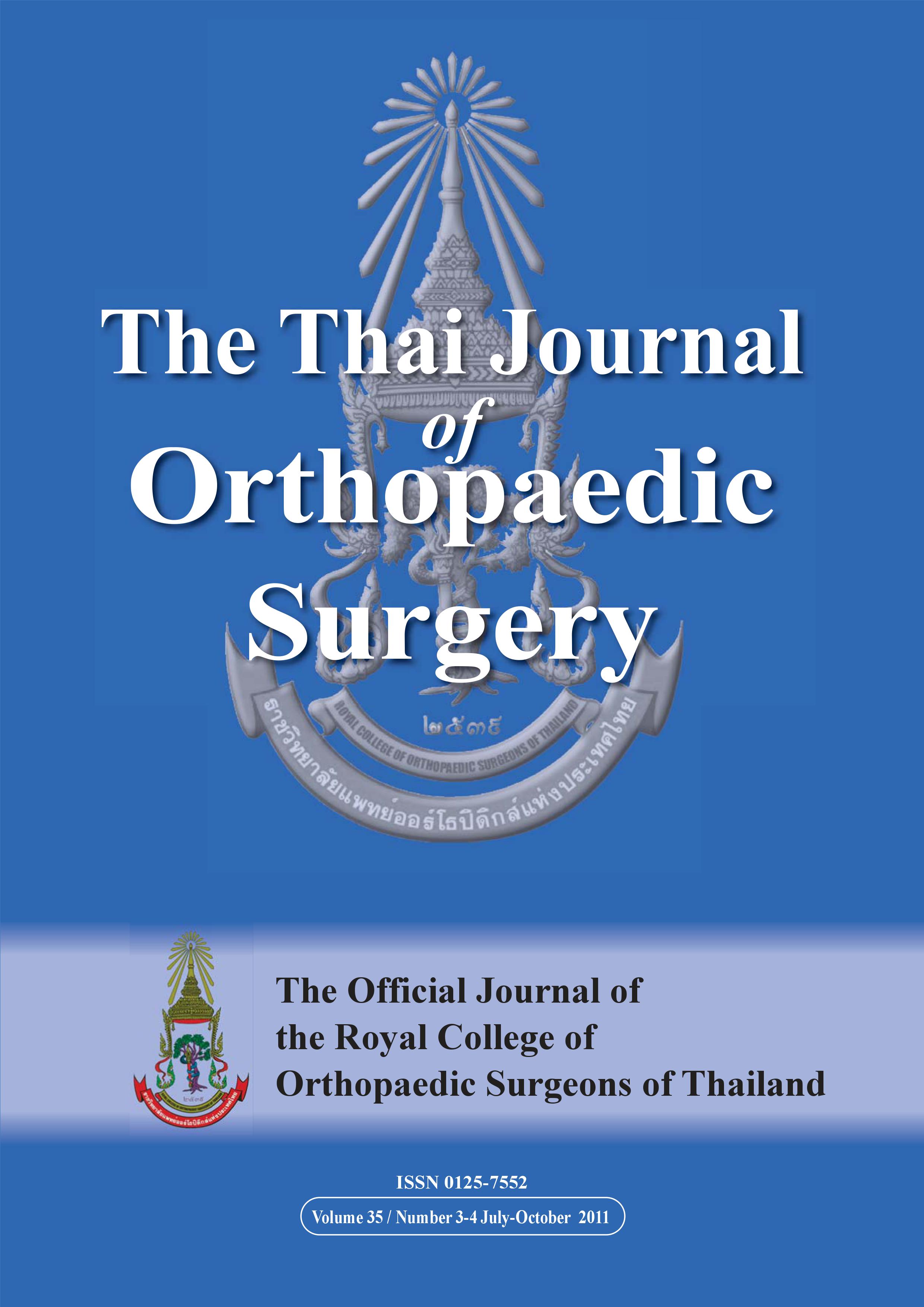Correction of Persistant Bilateral Femoral Anteversion A Comparison of Two Different Surgical Procedures: A Case Report
Main Article Content
Abstract
Persistent femoral anteversion, though of very low incidence, will be seen sporadically in practice. The condition must be considered when faced with a patient with intoeing gait. In a normal child, physiologic femoral anteversion should remodel itself by the age of 8-10 years. Surgical correction is only considered when there is limitation of daily activities. There are various acceptable procedures to correct anteversion. This case report details a 6 year old female with persistent bilateral femoral anteversion corrected using two different procedures: a subtrochanteric osteotomy fixed with k-wires on one side, and a diaphyseal osteotomy fixed with plate and screws on the other side. Each produced a different result. Although the cross pin fixation of the osteotomy seemed to be adequate, there was loss of reduction in that side during the post operative period. A better result was noted on the side fixed with plate and screws. However, follow up radiographs showed well remodelled osteotomies bilaterally. Sequential follow up for two years post surgery revealed an excellent outcome in terms of gait and function.
Article Details
References
2. Fabry G, MacEwen GD, Shands AR Jr. Torsion of the femur: a follow-up study in normal and abnormal conditions. J Bone Joint Surg Am. 1973; 55(8): 1726-38.
3. LeVeau BF, Bernhardt DB. Developmental biomechanics: effect of forces on the growth, development, and maintenance of the human body. Phys Ther. 1984; 64(12): 1874-82.
4. Gordon JE, Pappademos PC, Schoenecker PL, Dobbs MB, Luhmann SJ. Diaphyseal derotational osteotomy with intramedullary fixation for correction of excessive femoral anteversion in children. J Pediatr Orthop. 2005; 25: 548-53.
5. Crane L. Femoral torsion and its relation to toeing-in and toeing-out. J Bone Joint Surg Am. 1959; 41: 421-8.
6. Magilligan DJ. Calculation of the angle of anteversion by means of horizontal lateral roentgenography. J Bone Joint Surg Am. 1956; 38: 1231-46.
7. Terjesen T, Benum P, Anda S, Svenningsen S.
Increased femoral anteversion and osteoarthritis of the hip joint. Acta Orthop Scand. 1982; 53(4): 571-5.
8. Tönnis D, Heinecke A. Acetabular and femoral anteversion: In relation with osteoarthritis of hip. J Bone Joint Surg Am. 1999; 81(12): 1747-70.
9. Tönnis D, Heinecke A. Diminished femoral antetorsion syndrome: a cause of pain and osteoarthritis. J Pediatr Orthop. 1991; 11(4): 419-31.
10. Huber H, Haefeli M, Dierauer S, Ramseier LE. Treatment of reduced femoral antetorsion by subtrochanteric rotational osteotomy. Acta Orthop Belg. 2009; 75(4): 490-6.
11. Ogata K, Goldsand EM. A simple biplanar method of measuring femoral anteversion and neck-shaft angle. J Bone Joint Surg Am. 1979; 61(6A): 846-51.
12. Moulton A, Upadhyay SS. A direct method of measuring femoral anteversion using ultrasound. J Bone Joint Surg Br. 1892; 64(4): 469-72.
13. Hamdy RC, Ehrlich MG. Subtrochanteric derotation osteotomy of the femur using three or four wires. A technical note. Clin Orthop Relat Res. 1994; (302): 111-4.
14. Ounpuu S, DeLuca P, Davis R, Romness M. Long-term effects of femoral derotation osteotomies: an evaluation using three-dimensional gait analysis. J Pediatr Orthop. 2002; 22(2): 139-45.
15. Tomak Y, Piskin A, Ozcan H, Tomak L. Subtrochanteric derotation osteotomy using a bent dynamic compression plate in children with medial femoral torsion. Orthopaedics 2008; 31(5): 453-8.


